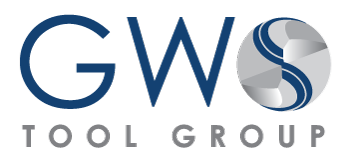
Cutting Edge Honing: Why it Matters
In the newest Manufacturing 101, we will discuss cutting edge honing and why it matters. Honing the cutting edge is a process of smoothing and refining the cutting edge of a tool. The process involves removing any irregularities or imperfections that may have occurred during the tool’s manufacturing or use. The honing process is essential […]

Understanding the Different Types of Carbide in Cutting Tools
In this Manufacturing 101, we will explore the different types of carbide materials used in cutting tools. Carbide cutting tools are widely used in the manufacturing industry due to their hardness, durability, and high resistance to wear. Understanding the different types of carbides and their properties can help you choose the right tool for your […]

Forming Taps vs. Cutting Taps – Which One Should You Choose?
Today we will discuss the differences between forming taps and cutting taps, and which one you should choose for your application. Taps are an essential tool used in the manufacturing process to create threads in a workpiece. Understanding the differences between forming taps and cutting taps can help you make the right choice and achieve […]

How Bone Screws are Made with Inserts – The Manufacturing Process
In today’s Manufacturing 101 post, we will be discussing the manufacturing process of producing bone screws using inserts. Bone screws are an essential component used in orthopedic surgeries for fixing bone fractures or in reconstructive procedures. In recent years, the use of inserts in bone screw manufacturing has gained popularity due to their efficiency and […]

Thread Whirling Inserts
This Manufacturing 101 discusses thread whirling inserts and how they work. Thread whirling is a machining process used to produce high-precision external threads on screws. They are commonly used in the production of aerospace, and medical components, such as bone screws. Definition: Thread whirling inserts are carbide inserted tools that are used in the thread […]

The Benefits of Step Drills – Improving Drilling Efficiency
In today’s Manufacturing 101 post, we will discuss step drills and their benefits. Step drills are a type of cutting tool that features multiple-diameter steps in a single tool. They are commonly used to combine multiple hole-making operations. Definition: Step drills are cutting tools that feature multiple steps of increasing diameter. Each step is designed […]

Custom Form Tools – What You Need To Know
In today’s Manufacturing 101 post, we will be discussing custom form tools and why they are important for many industries. Custom form tools are specially designed cutting tools that are used to create unique shapes or profiles in ferrous and non-ferrous materials. Definition: Custom form tools are cutting tools that are designed to perform specific […]

What is CFRP? Understanding Carbon Fiber Reinforced Polymer
In today’s Manufacturing 101 post, we will be discussing CFRP, which stands for Carbon Fiber Reinforced Polymer. CFRP is a composite material that is widely used in various industries, including aerospace, automotive, and construction. Definition: CFRP is a composite material made up of carbon fibers and a polymer resin, usually epoxy. The carbon fibers provide […]

Aluminum Alloys Versus Aluminum Castings
In today’s Manufacturing 101 post, we will be discussing the differences between aluminum alloys and aluminum castings, and their different applications. Aluminum alloys and castings have their own advantages and disadvantages, including differing strengths, costs, and corrosion resistance. Aluminum Alloys Versus Aluminum Castings: Aluminum Alloys: First, let’s go over what exactly Aluminum alloys and Aluminum […]

The Benefits of Ni-Alloys in Aerospace
In today’s Manufacturing 101 post, we will be discussing the benefits of using Ni-alloys in the aerospace industry. Ni-alloys, or nickel-based alloys, are used extensively in the aerospace industry for their exceptional high strength and durability, corrosion resistance, reduced weight, and cost-effectiveness. Benefits of Ni-Alloys in Aerospace: High Strength and Durability: Ni-alloys are known for […]
